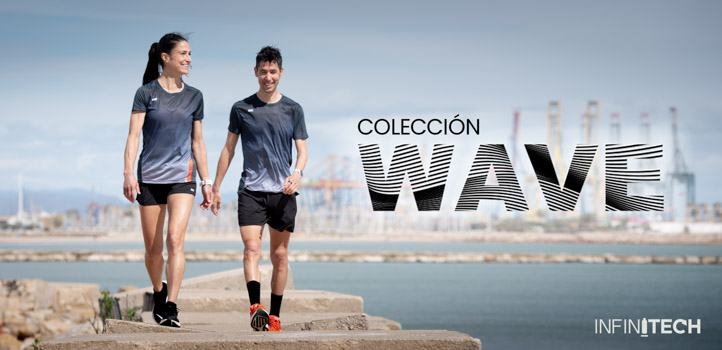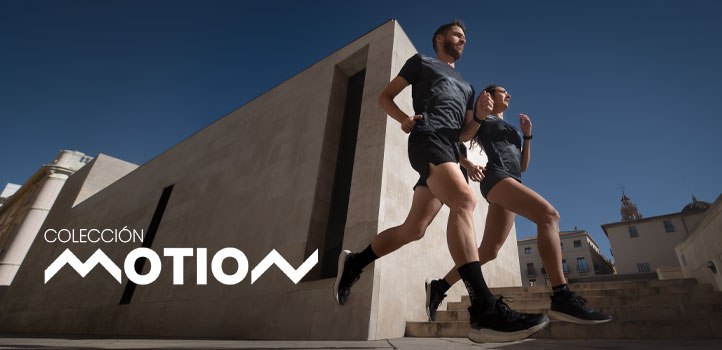Subscribe to our newsletter to find out about all the news and promotions, and automatically receive a welcome discount coupon in your email.

Low back pain, the good weather injury
by David Valenzuela Diaz
With the arrival of good weather begins the season of a very common injury in physios' offices: low back pain.
The main consequence of low back pain is that makes it impossible to practice sports in a very severe way, even leaving the athlete bedridden for a couple of days and even a longer period of time if the problem is not quickly addressed and continued treatment is sought during the training period.
Lack of core and abusive use of flip flops, the perfect combination for low back pain
The two main causes for which low back pain can occur are:
- Lack of 'core' (center of movement). The 'core' is usually defined as a “muscular girdle” that holds and supports the entire body.
- Abusive use of summer flip flops. The change from closed footwear to the famous summer flip flops.
The physiological curves of the spine are designed to protect and cushion the impact during walking and, above all, when running.
The famous "kidney" pain or low back pain, as we physios call it, is nothing more than pain in the lower back; It is a pain that affects the lower back, between L1 and L5, but if the lack of strength and balance between the lumbar and abdominal muscles is very serious, it can affect the sciatic branch, generating sciatica that makes the athlete very unable to fierce.
The affectation due to the lack of mobility and the existing pain can reach the point that the athlete cannot carry out such basic movements as getting out of bed, sitting or getting up from a chair or going to the bathroom normally.
Balance in the core area to avoid vulnerabilities
The balance of the core area is super important for the proper functioning of the normal biomechanical pattern of walking and running. The balance between transversus abdominis, diaphragm, pelvic floor and multifidus must balance the weight that is transmitted to the hip, a joint that serves as a crossroads for 26 muscles that reach it.

The required balance of the core area is important to avoid the vulnerability of the vertebrae. It must be taken into account that the vertebrae manage the body weight, supporting 70% of it (anterior part) and 30% the articular facets (rear part) and if there is not a correct balance in the core area, it is left vulnerable to the disc. vertebral, which can cause the dreaded herniated disc that ends up closing the foramen of conjunction (tunnel through which the nerves pass) creating a brutal sciatica that can sometimes require surgical intervention.
And why the abusive use of flip flops can carry a risk of low back pain?
When walking with flip-flops, the body weight is concentrated on the heels and this means that lumbar tension is generated and that the natural cushioning of the lordosis (normal lumbar vertebral curvature) decreases, which generates abnormal patterns of postural biomechanics.

This injury mechanism causes the athlete to have a flexed body pattern, which, aided by the time that can be spent sitting for work reasons or the forward lean when running on terrain with a positive slope (especially in the case of trailrunners) supposes that the psoas (hip flexor muscle) generate that tension that together with the weakness of the core creates the famous low back pain of the runner.
Tips to prevent the dreaded low back pain
Here are some tips to prevent the dreaded low back pain.
- Go to the physiotherapist for assessment of the core. Through physiotherapy tests it is possible to know if the gait pattern (previous post) and the core are strong and have good activation timing. (VALUING App)
- Specific protocols with core work exercises to strengthen the abdominal-lower back area if necessary.
- Improve the extension pattern of the lower back.
- Improve hip mobility.
- Specific leg strength work.
- Specific stretching of the muscles of the posterior aspect of the leg.
- Relaxation of psoas to avoid the flexor pattern.
- Improve the breathing pattern that helps diaphragmatic and abdominal breathing to be correct and controllable.

It should be known that 85% of low back pain is acute low back pain and that, according to studies, almost 90% of the world population will suffer from low back pain at some time in their life.
Most low back pain is due to muscular causes, but what happens if there is nerve involvement? The first thing to do is go to the doctor for a nuclear magnetic resonance (NMR) to determine if there is a herniated disc and, most importantly, if there is closure of the foramen of conjunction through which the nerves pass.
Knowing if the injury is surgical or not, the steps to follow would be:
- Go to the physiotherapist so that with a specific assessment he can objectify the injury and mark the action plan, with specific tests through applications such as VALOBANDO. (App for use in BOX55 SPORTS PHYSIOTHERAPY to objectify data on prevention and recovery in athletes).
- Work core with a physiotherapist or with therapeutic Pilates classes to strengthen the area.
- Improve hip mobility and lumbar extension patterns.
- Do not use flip flops that pull the body weight back and force the lower back to load excessively.
Currently, sports training programs, a sedentary lifestyle and the job position cause the psoas, hip flexor, to be generating a lumbar imbalance that helps to generate recurrent low back pain in athletes, including possible herniated discs in the future.
Physiotherapy is the fundamental basis both in the prevention and in the treatment of low back pain, which, accompanied by a good specific strength work of the perinae, generates the necessary health to be able to enjoy the sport and avoid serious injuries to the spine.


Text to 42K of :
David Valenzuela Diaz
Physiotherapist at BOX55
David Valenzuela Díaz has a degree in physiotherapy from the Cardenal Herrera CEU University and a Master's degree in assessment, physiotherapy and sports rehabilitation from the University of Valencia. He is CEO of BOX55 Fisioterapia y Academia SL, of BOX55 Academy and of Valobando SL Functional Biomechanical Analysis.
David Valenzuela, CEO of BOX55
Other entries by David Valenzuela Díaz
42K · All rights reserved


Comments
Post a first comment for this entry!